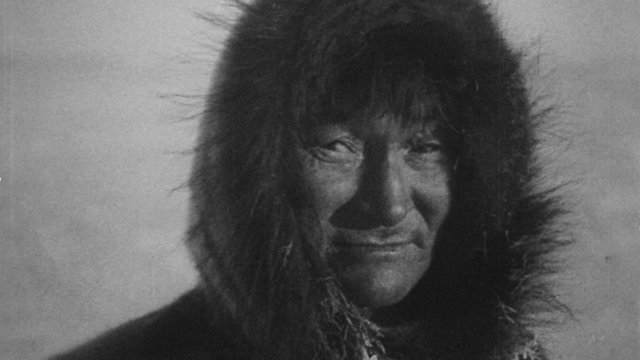
Nanook of the North
Where to Watch Nanook of the North

Nanook of the North, directed by Robert J. Flaherty, is one of the earliest and most significant works in the history of documentary film. Released in 1922, this pioneering effort provided cinematic insights into the life and struggles of the people in the remote and frosty expanses of the Arctic. This movie, a blend of staged sequences and real-life events, features an Inuk man named Allakariallak who plays the titular character, Nanook. Alice Nevalinga, also known as Nyla, plays Nanook's wife, while Cunayou and others appear as their children.
The movie provides a raw, unfiltered depiction of the austere lifestyles of the Inuit people, a culture relatively untouched by modern civilization at the time. Nanook's daily life, hunting escapades, family interactions, and attempts to survive the harsh climate form the central narrative of the film. There's an adventurous spontaneity about their life, and yet it remains intricately bound to the unforgiving Arctic terrain and its many perils.
Nanook of the North offers viewers an intimate look at the life of an indigenous Arctic hunter and his family. Despite severe cold, scarcity of resources, and predatory wildlife, Nanook and his family persist, showcasing resilience, ingenuity, and a deep understanding of their environment. Flaherty presents the Inuk as skillful hunters and gatherers, adept anglers, cheerful homemakers, and doting parents. Their creativity is frequently on display, whether they're building an igloo with blocks of ice or fashioning everyday tools from animal bones.
The narrative is framed through Nanook, a sturdy, smiling figure who brims with an indomitable spirit of survival. With his innate skills honed by years of living in the harsh Arctic, Nanook is an expert hunter, using traditional techniques passed down through generations. Kemal, his equally adept wife, portrays the intrinsic strength and resilience of the Inuk women perfectly. Scenes of them caring for their children, preparing food in the midst of blizzards, and crafting necessary tools from available resources symbolize the women's indispensable role in Inuit society.
Despite the obvious hardships that the environment imposes, the family displays an infectious joie de vivre as they go about their lives, often responding to dramatic events with an unwitting sense of humor. This portrayal gives viewers a challenging yet uplifting narrative about the greater human spirit and the power of perseverance.
Visually, this black-and-white film might appear modest to the modern eye, given today's high-definition, full-color expectations. However, it transcends these limitations with masterful cinematography that captures the menacing beauty and the vast, desolate landscapes of the Arctic. Its wonderfully composed frames often contrast the minuscule figures of Nanook and his family against the overwhelming expanse of shimmering ice fields, driving home the immensity of their struggle for survival.
The film's soundless format might also seem odd to contemporary viewers habituated to talkies. Yet, the absence of dialogues and musical score enhances the realism of the scenes, allowing viewers to imbibe the sheer rawness of the events and connecting them more intimately with the protagonists' experiences.
Historically, Nanook of the North is considered the first feature-length documentary. Wind back to the era before informational channels and internet-powered knowledge, this film marked a major milestone in visual ethnography – a mode of documenting and understanding other cultures. Audiences of that time, largely ignorant of people living in such inhospitable corners of the world, found the film mesmerizing and profoundly informative.
However, it's important to note that the film has been both acclaimed and critiqued for its anthropological perspective and its blend of staged scenarios and real-life events. Flaherty's approach to storytelling in this film established conventions still in use in documentarism. But it also raised questions about the boundaries between truth and fiction, thus adding a layer of complexity to its historic and cultural significance.
In sum, Nanook of the North is a timeless piece of cinema that offers not just a gaze into the life of the Inuit people living in the harsh Arctic conditions but also moments of joy, camaraderie, and unwavering human spirit in the face of adversity. It's a testament to the power of the human will and the profundity of cultural diversity. For any film enthusiast or student of culture, this film remains a necessary point of reference.
Nanook of the North is a Documentary, Drama movie released in 1922. It has a runtime of 78 Critics and viewers have rated it mostly positive reviews, with an IMDb score of 7.6..
How to Watch Nanook of the North
Where can I stream Nanook of the North movie online? Nanook of the North is available to watch and stream, buy on demand, download at Hulu Plus, Max, Plex, Tubi TV, Apple TV, Amazon, Vudu Free, Kanopy, Google Play. Some platforms allow you to rent Nanook of the North for a limited time or purchase the movie for downloading.




















